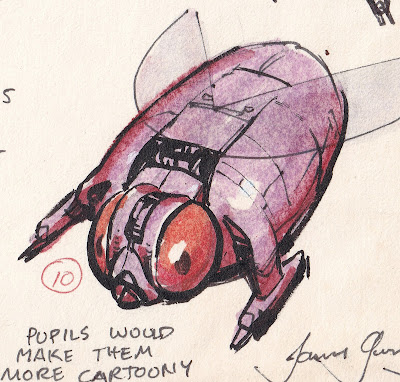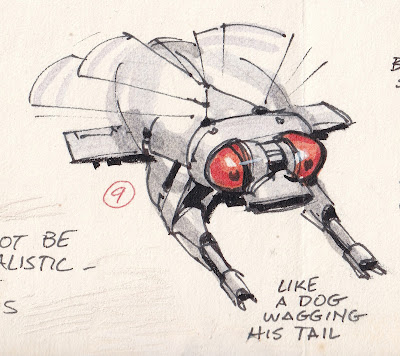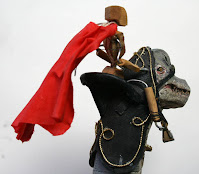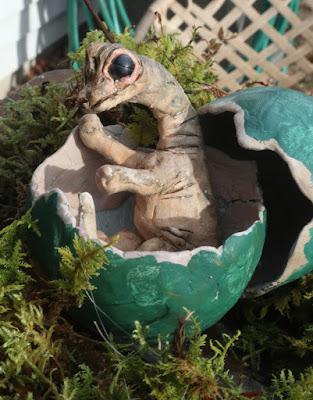Yes, I share the maquette building process with the writer, the art director and the scientist as I develop the illustration.
Wednesday, March 31, 2021
Fees, Social Media, and Working with Clients
Yes, I share the maquette building process with the writer, the art director and the scientist as I develop the illustration.
Tuesday, March 30, 2021
Dinosaur Hatchling Behind-the-Scenes
Eggshell is made with epoxy sculpting clay formed over a light bulb. Baby titanosaur is polymer clay, with black beads for eyes.
Monday, March 29, 2021
Imagining a Hatchling
I made a quick maquette of the little hatchling out of Sculpey and made the two halves of the shell using Magic Sculpt, a two-part epoxy sculpting compound. Photographing the setup in a bed of moss gave me plenty of visual information to incorporate into the oil painting.
Sunday, March 28, 2021
Creating a Maquette to Visualize Borealopelta
I use a hot glue gun to piece together a cardboard base for the maquette, then surface it with Model Magic, a children’s air-dry modeling material. I add the spikes later with a two-part epoxy modeling compound called Magic Sculpt. Then I paint the maquette with acrylic so that it looks more real when I photograph it outside in the sun.
Saturday, March 27, 2021
Early Thoughts on NFTs
There's been a lot of talk lately about NFTs (non-fungible tokens) and the art world. In this post I'll share some preliminary thinking and some resources in case you're researching the topic.
The basic concept has been around for a few years, but it has been in the news after an image by "Beeple" (the social-media moniker of Mike Winkelmann) was auctioned for $69 million at Christies, making his work the third highest price auction result by a living artist.
Below is a good introduction of the phenomenon on NPR's "Planet Money" podcast.
Friday, March 26, 2021
Painting the "Reaper of Death"
This dinosaur is called Thanatotheristes, which means “reaper of death.”
Before launching into the finished painting I try out various background treatments on a small preliminary sketch—the sketch in the upper left of the array of four color sketches below.
The sketch lets me try out color combinations before launching into the finished painting.
By the time I’m ready to start the final, I feel more confident about my color choices.
Here's the page in the next issue of Ranger Rick. I left that arbitrary dark shape for a background to the type.
Thursday, March 25, 2021
Sentient Insect Spaceships
I looked through lots of photos of insects, trying to dream up different ways to use the body plan of a beetle or a fly as a starting point.

A vehicle has a lot of the same features as a natural creature—optical sensors, landing gear, external armor, wings and wing covers, fuel intake tubes, and weapons systems.

The goal was to give them a personality. I comparing them to a dog with wagging tail or a pesky housefly.
More on creating concept art in my book Imaginative Realism: How to Paint What Doesn't Exist.
Tuesday, March 23, 2021
Sylvia and Bix
Sylvia and Bix, the Protoceratops, transparent oil wash over pencil drawing on illustration board, from Dinotopia: A Land Apart from Time.
Monday, March 22, 2021
Janus la Cour
Janus la Cour, Summer day on the beach near Aarhus, 1901. Oil on canvas
He studied at the Royal Danish Academy and traveled to Italy where he pursued plein air painting. This study was from 1871.
Janus la Cour, Party from Helgenæs with Mols mountains in the background, 1875
He was inspired by the theatricality of the landscapes of Italy and the Alps, and most of his paintings are either observational studies painted on location or dramatic scenes developed in the studio.
Sunday, March 21, 2021
Why Do Mushrooms Appear Overnight?
One puzzling characteristic of mushrooms is how they're able to pop up overnight, apparently fully formed.
To understand how that happens, it's important to recognize first that mushrooms aren't the whole organism. They're just the fruiting bodies of extensive networks known as mycelia.
As fungus expert Merlin Sheldrake explains in his new book Entangled Life, "When you look at mushrooms, you're looking at fruit. Imagine bunches of grapes growing out of the ground in their place. Then imagine the vine that produced them, twisting and branching below the surface of the soil."
Mushrooms "rapidly inflate with water, which they must absorb from their surroundings—the reason why mushrooms tend to appear after rain. Mushroom growth can generate an explosive force. When a stinkhorn mushroom crunches through an asphalt road, it produces enough force to lift an object weighing 130 kilograms."
Merlin Sheldrake, Entangled Life: How Fungi Make Our Worlds, Change Our Minds & Shape Our Futures
Saturday, March 20, 2021
Farmer vs. Artist
Friday, March 19, 2021
Let's Paint a Snowscape One Last Time
Here's a new video with some suggestions for painting snow.
I paint a campfire in the snow, some snow melting on a smooth rock (below), and the last snow clinging to a cloverleaf bypass.
I use watercolor and gouache and focus on three variables: color, light, and shape. (Link to YouTube)
Thursday, March 18, 2021
Banksy and Bob Ross
Banksy creates a painting on the theme of escaping from prison, with an oddly-appropriate voiceover from Bob Ross. It's audacious...and it fits nicely. (Link to YouTube)
In another Banksy video, an artist sets up a series of paintings during the Venice Biennale, an event that Banksy has never been invited to (Link to YouTube).
Wednesday, March 17, 2021
Sarah's Questions about Costumes and Writing

Sarah, an art student at East Tennessee State University, asks: "How did you get inspiration for the costuming that the people in Dinotopia wear? And as someone that has difficulty in creating objects that don't exist in real life, how did you create the accessories used by the dinosaurs?
1. You can find costumes at thrift stores or junk shops. Almost every garage sale has a Halloween costume or an unusual hat that you may want to use later.
2. Many smaller communities have a local theater company with costume collections. They are sometimes willing to loan their costumes to illustrators.
3. Renaissance festivals have vendors with an assortment of hats, cloaks, corsets, gowns, breeches, and doublets. Example: Moresca Clothing and Costume. That’s where the blue and red jacket came from, and I’ve used it in many Dinotopia pictures.
4. People who work in living history museums wear very authentic costumes. I've found they're glad to model for a sketchbook study. They may also be willing to pose for photo reference, but be sure to get their written permission first. Examples: Plimouth Plantation, Old Sturbridge Village, and Colonial Williamsburg.
5. Big cities like New York, London, or Los Angeles have rental agencies serving theatrical or movie productions. Sometimes they will sell off their older, worn-out costumes. That’s where the doublet with the slashed sleeves above came from. Examples: Palace Costumes, Adele's Costumes.
6. Large museums, like the Metropolitan Museum or the Victoria and Albert in London have costume collections which can usually be sketched or photographed. Examples: Metropolitan Museum Costume Institute (NYC), and Victoria and Albert Museum, (London).
7. You can improvise a lot of costume details with samples of fabric combined with old clothes from your closet. It doesn’t matter if the color matches or if it looks good enough to go on stage. You’re just looking for information about folds and drapery.
8. If you can’t find the right costume, don’t worry! Remnants of leather, satin, brocade, or velvet from a fabric store can provide you with helpful information about the behavior of the fabric. Steel bowls from the kitchen can give ideas for how armor would look.
9. For simple togas and capes, you can drape and pin fabric samples over your artist mannikin or dressmaker’s dummy. For the fabric to scale down to a miniature size, it should be a very light weight. Cellophane scales down really well over a miniature figure, and can be spray painted to give it opacity.
 10. Don’t be shy to ask for help. If you know someone who is clever with a sewing machine and can think laterally, they might be able to help you improvise a few basic things.
10. Don’t be shy to ask for help. If you know someone who is clever with a sewing machine and can think laterally, they might be able to help you improvise a few basic things.
11. Once you get your model (or yourself) in costume, you can take reference photos in a variety of poses. If it’s an easy pose to hold, you can work directly from the model. That's how I did the painting of Oriana, which appears in Dinotopia: The World Beneath. I put pieces of tape on the floor to mark where the model's feet should return between breaks. The whole session only took about an hour and a half, which saved time over shooting reference or doing drawn studies.
12. If you attend a sketch group, ask if your fellow artists might enjoy sketching from a costumed model. If so, everyone can pitch in a costume or two, or the models may come with something. You can usually pay the model to stay after the sketch session to work with you for reference.
2.) How was the process of building the world of Dinotopia different in text vs. the paintings that accompanied it (or vice versa)?
The text is just as important to me as the paintings, but as you suggest, the process is different. As your question also suggests, the pictures sometimes drive the accompanying text, rather than always being subservient or secondary to it.It’s a challenge to subordinate the written text to the pictures. It would be very tempting to give over more space to the writing, because writing is much faster to compose than artwork. A Dinotopia book could be finished up in half the time if the writing were allowed to take up the majority of the page space.
With words and pictures balanced in this way, there isn’t the novelist’s luxury to indulge in rich layers of motivation, backstory, and extended conversation. It’s a sacrifice I gladly make in exchange for the glories that only pictures can provide.
Although I have the plot worked out fairly carefully in the early storyboard and outline stages, there’s plenty of room for improvisation during the final art stage. The idea for the old musical conductor character named Cornelius Mazurka, for example, emerged while I was creating the paintings.
The running text comes last, so ideas that come up during the art stage can freely enter the story. I write the final text in a page layout program, with all the page elements in place. In this way I can be sure that the text comes to a full stop at the end of every layout. I want the reader to be able to pause and enjoy the artwork without being tripped up on the page turn. And I want the book to be as inviting to the casual browser as to the reader who takes the full train ride.
Tuesday, March 16, 2021
Animated Arthur
Monday, March 15, 2021
Character Maquettes
A maquette is a miniature or scale model of a building, creature, or character constructed as a reference tool to explore form and lighting.
I used polymer clay, a modeling compound which can be shaped like clay and then baked hard in the oven.
Sunday, March 14, 2021
Motion Dazzle
What is the purpose of the bold black and white stripes on a zebra? They don't seem to function as a camouflage in the ordinary sense of making them invisible.
According to David Attenborough's new "Life in Colour" series, the stripes protect them from large carnivorous enemies such as cheetahs or lions, In a fast-running attack, the stripes can create just enough confusion to frustrate the predator, who must make quick decisions on where to sink their claws or teeth.
They're like ordinary dazzle camouflage, but set in motion.
Stripes can also protect zebras from small attackers: flies. Biting flies can be a real menace for zebras on the African plains.
Scientists have learned that the stripes interfere with the ability of flies to land on them. According to New York Times, once the flies get close to the zebra, the stripes "seemed to dazzle the flies so much that they couldn’t manage a controlled landing. Flies zoomed in too fast and either veered off just in time — or simply bumped into the zebra and bounced off."
Scientists have found that the stripes can reduce the number of flies by a factor of four.
Saturday, March 13, 2021
Happy Birthday, Al Jaffee

Dean Morrissey (1951-2021)
It's sad to hear about the passing of Dean Morrissey (1951-March 4, 2021). He was a kind man and a talented painter with wonderful dreams. Obit
Friday, March 12, 2021
Should Art Museums Sell Artwork to Keep the Lights On?
After a financially challenging year, the Metropolitan Museum has announced that it is considering selling pieces from its collection to cover some of its losses, making an exception to its normal rule against deaccessioning for operating expenses.
The Association of Art Museum Directors relaxed their rules on the practice, making it OK to do so without censure.
This decision will have long range consequences, affecting the willingness of collectors to donate. When donors offer their collections, they often require museums to accept a lot of works that are of lesser quality or inauthentic.
Which works should be prioritized for sale? Some museum curators, such as the Indianapolis Museum of Art, have assigned letter grades to all the works in their collection to decide which ones are first in line for sale.
Read more:
New York Times: Facing Deficit, Met Considers Selling Art to Help Pay the Bills
Clean House to Survive? Museums Confront Their Crowded Basements
ArtForum: Met Contemplates Deaccessioning to Cover Def
Thursday, March 11, 2021
Polish Artist Jan Matejko

Wednesday, March 10, 2021
Why Put Impastos in the White Areas?
 Walter Wick asks: "Why [do you put] impasto in the highlights and not in the shadows?"
Walter Wick asks: "Why [do you put] impasto in the highlights and not in the shadows?"










































